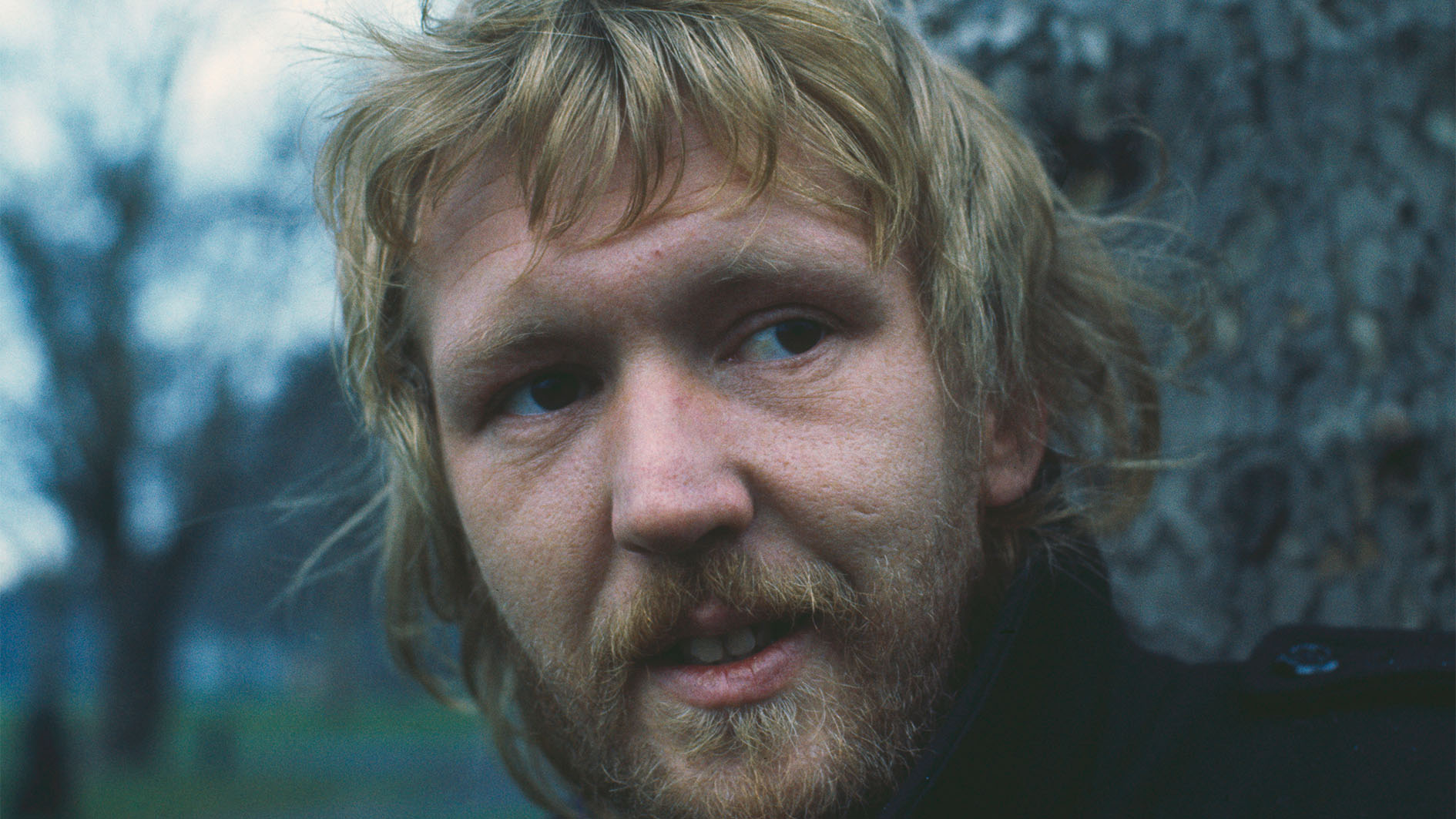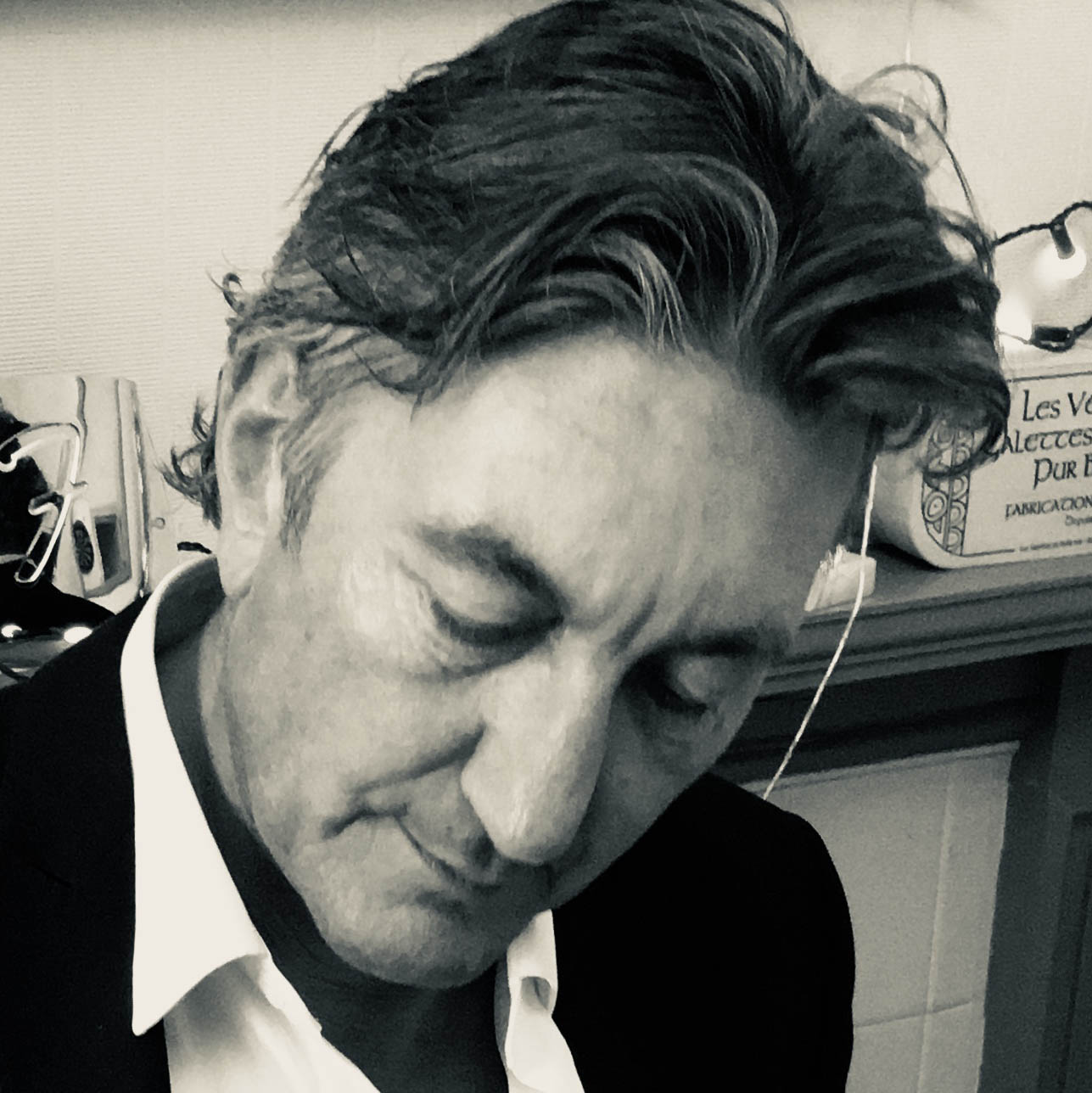“He wanted his version of the song to be a stark, heavy solo-piano thing, but they convinced him to turn it into a grand, crashing, theatrical monster-ballad, complete with orchestra”: The story of Nilsson's Without You
How the singer transformed a seemingly unexceptional album track into one of the most abiding love songs of all time

It’s been hailed as one of the first ever power ballads and unlike many vocal belters unleashed in the last half century, its soaring bombast is more than matched by an achingly beautiful and heartfelt vocal performance.
According to the American Society of Composers, Authors and Publishers (ASCAP), Without You has been recorded by over 180 artists, but it was the recording released by singer-songwriter Harry Nilsson on 11 October, 1971, that is the defining version. It’s a haunting, deeply emotive song, which over five decades on, remains an enduring classic.
By the early 70s, Harry Nilsson had emerged as a prodigiously talented singer-songwriter and had been widely feted by The Beatles. During a 1968 press conference, when John Lennon was asked to name his favourite artist, he replied: “Nilsson”. Lennon gave the same reply when asked to name his favourite group.
The Beatles were drawn to Nilsson’s idiosyncratic songwriting style, which was characterised by pioneering vocal overdubbing, the fusion of Caribbean sounds and his love of the Great American Songbook.
Brooklyn-born Nilsson had moved to Los Angeles as a teenager where he began working as a computer programmer in a bank in the early 60s, before becoming interested in musical composition and close harmony singing. He signed with RCA Victor in 1966 and released the album Pandemonium Shadow Show the following year. Derek Taylor, former publicist for The Beatles, was so impressed by the album he bought a boxful and began giving copies to friends and industry acquaintances.
Nilsson’s songs went on to be covered by artists such as The Monkees, Glen Campbell, Fred Astaire and The Yardbirds. Three Dog Night’s treatment of his song One reached No.5 in 1969.
Nilsson also had a great voice – “huge and creamy” as journalist Tom Breihan of Stereogum has put it – and he earned good money singing on demos for other songwriters. But even as his music career took off, Nilsson continued working as a computer programmer for some years. He was allegedly so good at the job that the bank didn’t fire him when they learned he had lied about finishing high school.
Want all the hottest music and gear news, reviews, deals, features and more, direct to your inbox? Sign up here.
In 1971, Nilsson released his seventh album, Nilsson Schmilsson, his most commercial long player by far and Without You was an undoubted highlight. But for all his songwriting prowess, he did not write Without You. The song was actually penned by Pete Ham and Tom Evans of Welsh rock band Badfinger.
Badfinger were the first non-Beatles artists signed to Apple Records, in July 1968, after being spotted by long-standing Beatles road manager and assistant Mal Evans, who in turn recommended them to Apple Records A&R head, Peter Asher. Paul McCartney took the band under his wing, penning a hit for them, Come And Get It.
The germs of the song Without You came from a composition written in 1970 by Ham called If It’s Love. At the time, the band members were sharing a house in Golders Green, London. According to Tom Breihan's feature in Stereogum in February 2019, the song lacked a chorus, although it did already contain the lines: “Well I can't forget tomorrow / When I think of all my sorrow / I had you there but then I let you go / And now it's only fair that I should let you know”.
Evans had a chorus but no song to attach it to and so they melded both elements together to create Without You. The song appeared on Badfinger’s 1970 album No Dice. Melodically, it features many of the core elements of the song that would become a hit for Nilsson. But it lacks the heart-wrenching emotional resonance.
“Badfinger’s version of the song is strummy and direct,” wrote Tom Breihan, “but it also sounds like a blueprint, not a final version. They could’ve turned it into a show-stopping ballad, but they didn’t. They never even released it as a single.”
Harry Nilsson was at a party in Laurel Canyon when he first heard Badfinger’s original version of the song. He mistook it for a Beatles song and decided that it should be included on his forthcoming album, Nilsson Schmilsson.
Sessions for the album took place from January to June 1971 at Trident Studios in Soho, London and Island Studios in west London. Without You was recorded at Trident and according to Breihan, Nilsson wanted his version of the song “to be a stark, heavy solo-piano thing”. But the producer Richard Perry, who was just emerging as an A-list pop producer, had other ideas. “Perry counterbalanced Nilsson’s messy-weirdo side and put all the focus squarely on Nilsson’s titanic voice,” wrote Breihan, “Perry convinced him to turn it into a grand, crashing, theatrical monster-ballad, complete with orchestra.”
One instrument that was pivotal to the arrangement was the Trident house piano, a late 19th-century C. Bechstein grand. Keith Emerson reportedly played the instrument on early versions of the song, but his keyboards were deemed too complex. So Nilsson and Perry replaced him with Gary Wright, who provided a beautifully simple and stately piano line. Other session players on the track included Jim Keltner on drums and Klaus Voormann on bass. Stirring string and French horn arrangements were created by British cellist, arranger, conductor and composer, Paul Buckmaster.
Loneliness and loss are the core themes of Without You. It’s been argued that the song is schmaltzy and there’s certainly a larger-than-life grandiose quality to it. But the arrangement is also tasteful and considered, with every element being made to count. From the gently lilting piano chord intro to the soaring, enigmatic choruses, this is a masterclass in feel, emotion and dynamics.
Nilsson had a three-and-a-half octave vocal range and it is used to its full effect here. His voice had a warm, smooth timbre and his delivery sounds effortless. There are some beautiful touches, such as 23 seconds in where he glides effortlessly up into falsetto on the line “You always smiled but in your eyes the sorrow shows”.
Gary Wright’s sparse, gentle piano is the sole accompaniment throughout the first verse before Klaus Voormann’s bass and then strings enter the mix at the start of the second.
At 1:08, it opens up into the chorus, with full kit and deep, strident strings introducing a more sombre, menacing feel. At 1:24, Nilsson’s rich voice moves up an octave. For all its power and emotion, it is warm and controlled, and underpinned by an achingly emotive delivery: “I can’t live if living is without you / I can’t give, I can’t give anymore”. And so it goes on, with the spacious arrangement of the verses offset by the majestic bombast of the choruses.
In a bizarre coincidence, Badfinger were in another studio at Trident while Nilsson was recording Without You. “This guy came in and said "Are you Badfinger? I'm Harry Nilsson,” Tom Evans told journalist Mary Campbell in the New Jersey newspaper The Daily Register on 21 April 1972. “‘I've got this song to play for you’. It was his version of Without You. He said he was going to use it as a single… No one had recorded any of our songs until then… It's one of the most exciting things that has happened.”
Without You was released on 11 October 1971 and topped the singles charts in the UK, US, Canada, Australia, New Zealand and Ireland. It was pivotal in fuelling the chart ascent of the album Nilsson Schmilsson, released exactly a month later.
For all its creative and commercial success, Without You has a dark legacy. Financial conflicts allegedly resulted in royalty payments being frozen for writers Pete Ham and Tom Evans. To compound problems, the progress of Badfinger became thwarted by legal wranglings. As journalist, songwriter, drummer and producer Will Birch put it: Badfinger were “mismanaged and exploited beyond the bounds of human decency”.
When in early 1975, the band allegedly stopped receiving salary cheques and legal action halted the promotion of their latest album Wish You Were Here, the pressure became too much to bear for Pete Ham. On the morning of 23 April 1975, he hanged himself in the garage studio of his house in Woking. Eight years later, in almost identical circumstances, Tom Evans also took his own life.
As Michael Heatley noted in Classic Rock magazine: “Despite writing and recording some wonderfully memorable music, Badfinger went down in the annals of rock history for all the wrong reasons. Most people who remember the band today will probably point to the fact that two key members took their own lives.”
Without You and the album Nilsson Schmilsson catapulted Harry Nilsson into the mainstream and yielded a Grammy for best pop male vocal performance. But despite his prolific output and his clear talents as a singer and musician, Harry Nilsson had never performed live. All that changed on 4 September, 1992, when he walked out on stage at Caeser’s Palace, Las Vegas, to join Ringo Starr’s All-Starr band.
“To be a member of this band you have to have had a hit some time this century,” Ringo joked to the Caesar’s Palace crowd. “And [Nilsson] had probably the biggest, most beautiful hit of the ’70s: Without You”
Nilsson’s appearance was completely unplanned. The 51-yr-old had just appeared at the soundcheck unannounced that evening. He had been a good friend to both Ringo and John Lennon and their combined West Coast partying antics back in the Seventies were near-legendary.
It was a spur of the moment idea for him to go out and sing Without You. He waltzed out on stage dressed in an ill-fitting linen suit to a mere smattering of applause.
“This was a Caesar’s Palace crowd,” All-Starr Band member Todd Rundgren told Pitchfork magazine in June 2021. “It’s not the most musically sophisticated audience in the world.”
Nilsson’s voice that night was rather ragged and deeper than when he had recorded the song in Trident studios 21 years earlier. But it is still a strong and emotive Admittedly, he struggled to quite hit some of the high notes, but Rundgren provided the high harmonies and the audience joined in on the anthemic chorus. “That song gets way high,” noted Rundgren.
Given Nilsson’s prolific songwriting output as a songwriter, it’s ironic that the two songs for which he is best known. Everybody’s Talkin’ and Without You, were not written by him. But it took Nilsson’s talent and vision to really recognise their potential and to make them his own. As Richie Unterberger wrote in a review of Without You for AllMusic. “It was just an album cut… it took Harry Nilsson to fully exploit the song's melodrama.”

Neil Crossley is a freelance writer and editor whose work has appeared in publications such as The Guardian, The Times, The Independent and the FT. Neil is also a singer-songwriter, fronts the band Furlined and was a member of International Blue, a ‘pop croon collaboration’ produced by Tony Visconti.
